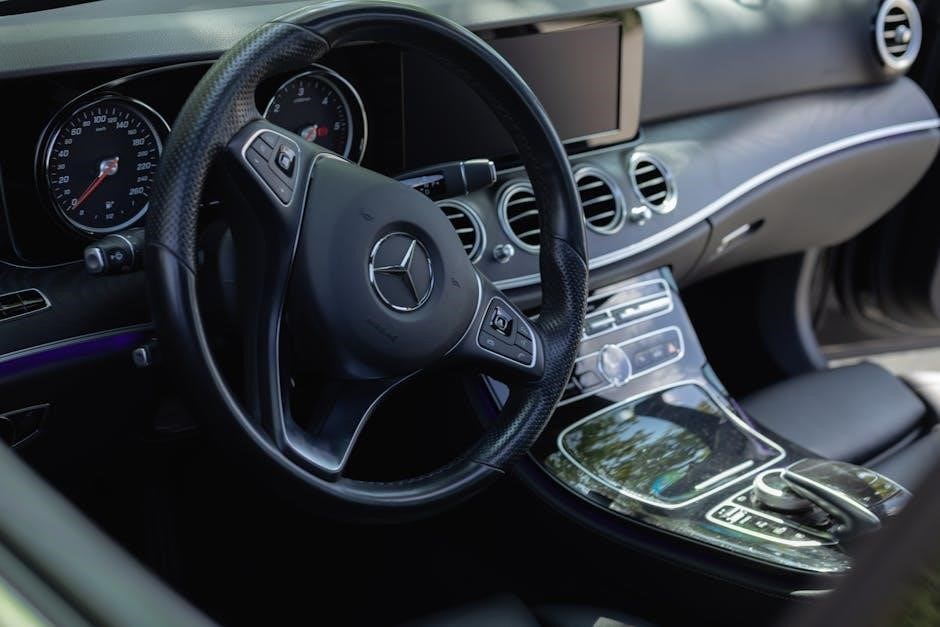Steering systems are crucial for vehicle control, with power steering and manual steering being two primary options, offering distinct driving experiences, and
variations
in terms of functionality and maintenance, using different mechanisms to guide wheels, with .
Definition of Power Steering and Manual Steering

Power steering is a system that utilizes a source of power to assist in steering the wheels, making it easier to maneuver the vehicle, especially in low-speed situations or when driving in heavy traffic.
On the other hand, manual steering is a system that relies solely on the driver’s physical effort to turn the wheels, connecting directly to the steering mechanism, requiring more strength and effort from the driver.
This fundamental difference in the way the two systems operate is what sets them apart, with power steering providing a smoother and more responsive driving experience, while manual steering offers a more direct and connected feel to the road.
The definitions of these two systems are crucial in understanding their differences and similarities, and how they impact the overall driving experience, with power steering being generally more expensive than manual steering, but offering a range of benefits that make it a popular choice among drivers.
By understanding the definitions of power steering and manual steering, drivers can make informed decisions about which system is best for their needs, and what to expect from their vehicle in terms of handling and performance.
Overall, the definitions of power steering and manual steering provide a foundation for understanding the complexities of steering systems and their role in the overall driving experience.

Key Differences Between Power Steering and Manual Steering
Differences in power steering and manual steering systems, including functionality and driver effort, using
various mechanisms to guide wheels, with distinct advantages and disadvantages, and different maintenance requirements, overall .
Difference in Steering Mechanism
The steering mechanism is a critical component of a vehicle’s steering system, with power steering and manual steering employing different mechanisms to guide the wheels. Power steering systems utilize hydraulic or electric assistance to reduce the driver’s effort in turning the steering wheel, whereas manual steering relies solely on the driver’s physical effort to turn the wheels, connecting directly to the steering mechanism.
The power steering mechanism typically consists of a power steering pump, hoses, and a steering gear, which work together to provide the necessary assistance to the driver. In contrast, manual steering mechanisms consist of a steering column, steering gear, and linkages that connect the steering wheel to the wheels, requiring the driver to exert more physical effort to steer the vehicle.
Overall, the difference in steering mechanism between power steering and manual steering systems has a significant impact on the driving experience, with power steering providing a smoother and more responsive experience, and manual steering requiring more driver input and effort, with various implications for vehicle control and maintenance, and different designs and technologies used in the mechanisms.

Advantages and Disadvantages of Power Steering
Power steering offers convenience and ease, with smoother handling, using hydraulic or electric assistance, and various technologies, providing a more responsive driving experience, with several benefits, and some drawbacks, in terms of functionality, and overall performance, every day.
Comparison of Maintenance Costs
The maintenance costs of power steering and manual steering systems differ significantly, with power steering systems generally requiring more frequent and costly repairs. This is due to the complex nature of power steering systems, which involve hydraulic or electric components that can fail over time. In contrast, manual steering systems are relatively simple and require less maintenance, as they rely solely on the driver’s physical effort to turn the wheels. As a result, the cost of repairing or replacing a manual steering system is typically lower than that of a power steering system. Additionally, power steering systems may require more frequent fluid changes and other maintenance tasks, which can add to their overall cost. Overall, the maintenance costs of power steering systems can be a significant factor to consider when choosing between power steering and manual steering. The cost of maintenance can vary depending on the vehicle and the driving conditions, but in general, manual steering systems are less expensive to maintain than power steering systems, and this is an important consideration for many drivers, and vehicle owners, and operators, and users.

Choosing Between Power Steering and Manual Steering
Drivers consider factors like cost, driving style, and vehicle type when selecting between power steering and manual steering, using
online resources
to inform their decision with .
Types of Steering Systems
There are several types of steering systems available, including power steering and manual steering, with variations such as hydraulic power steering, electric power steering, and electro-hydraulic power steering.
Each type of steering system has its own unique characteristics, advantages, and disadvantages, and is suited for different types of vehicles and driving conditions.
For example, hydraulic power steering is commonly used in heavy-duty vehicles, while electric power steering is often used in smaller vehicles.
Additionally, some vehicles may have advanced steering systems, such as four-wheel steering or rear-wheel steering, which can provide improved handling and stability.
Overall, the type of steering system used in a vehicle can have a significant impact on its performance, safety, and overall driving experience, and drivers should consider their options carefully when choosing a vehicle.
By understanding the different types of steering systems available, drivers can make informed decisions and choose the vehicle that best meets their needs and preferences, with a range of options to suit different driving styles and requirements, and various systems to choose from, with .
